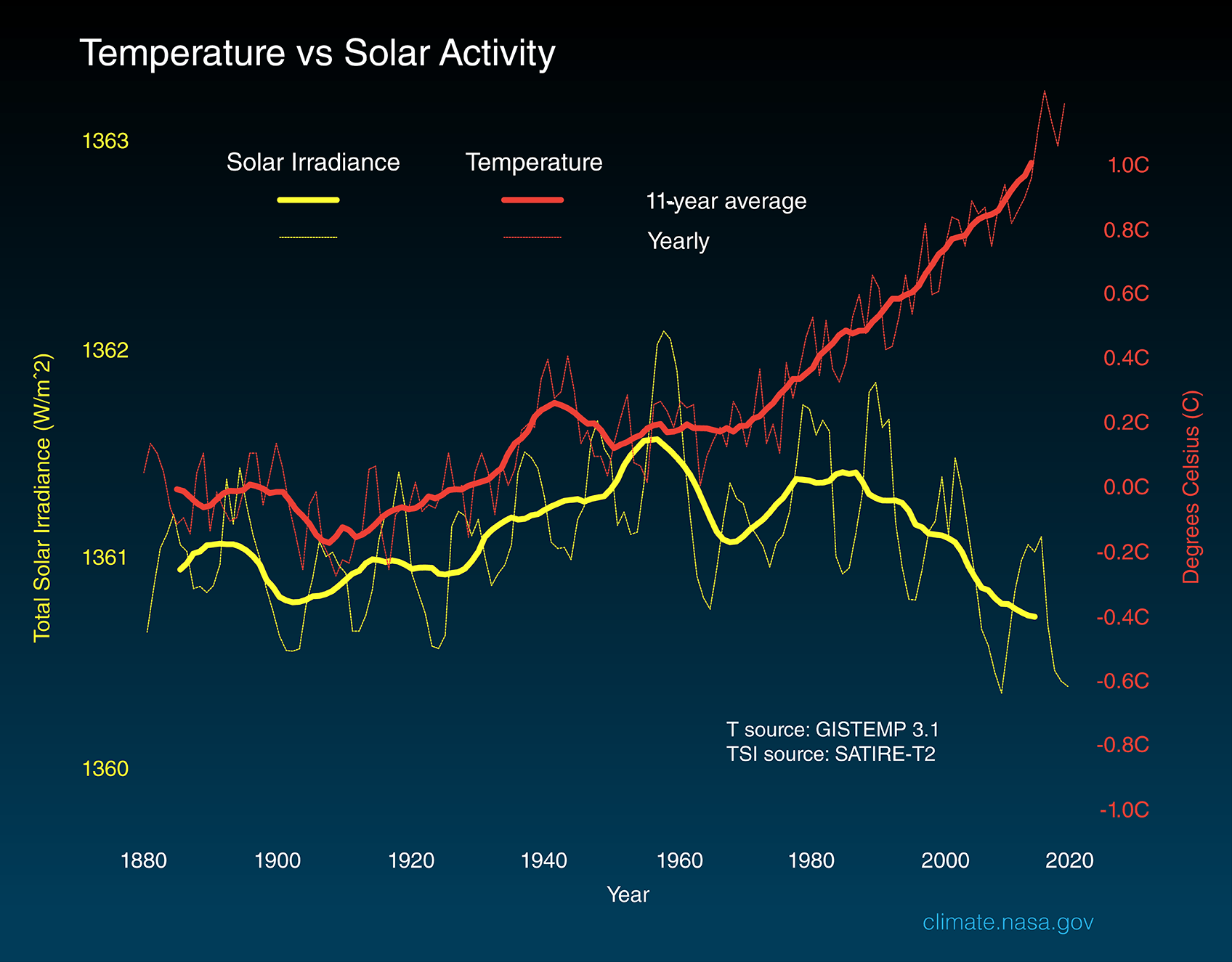Is the Sun causing global warming?

The amount of solar energy Earth receives has followed the Sun’s natural 11-year cycle of small ups and downs with no net increase since the 1950s. Over the same period, global temperature has risen markedly. It is therefore extremely unlikely that the Sun has caused the observed global temperature warming trend over the past half-century.
No. The Sun can influence Earth’s climate, but it isn’t responsible for the warming trend we’ve seen over recent decades. The Sun is a giver of life; it helps keep the planet warm enough for us to survive. We know subtle changes in Earth’s orbit around the Sun are responsible for the comings and goings of the ice ages. But the warming we’ve seen in recent decades is too rapid to be linked to changes in Earth’s orbit and too large to be caused by solar activity.
One of the “smoking guns” that tells us the Sun is not causing global warming comes from looking at the amount of solar energy that hits the top of the atmosphere. Since 1978, scientists have been tracking this using sensors on satellites, which tell us that there has been no upward trend in the amount of solar energy reaching our planet.
A second smoking gun is that if the Sun were responsible for global warming, we would expect to see warming throughout all layers of the atmosphere, from the surface to the upper atmosphere (stratosphere). But what we actually see is warming at the surface and cooling in the stratosphere. This is consistent with the warming being caused by a buildup of heat-trapping gases near Earth's surface, and not by the Sun getting “hotter.”
READ MORE




